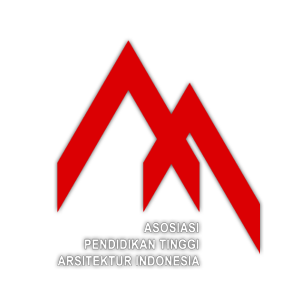The Characteristics of Kampung Sekayu Conservation Area, Semarang City
Agnies Ayu Kusumaningdyah(1*), Adhista Putri Presilia(2), Anindya Putri Tamara(3), Erliza Syahrani(4)(1) Magister Perencanaan Wilayah dan Kota, Universtas Diponegoro
(2) Magister Perencanaan Wilayah dan Kota, Universtas Diponegoro
(3) Magister Perencanaan Wilayah dan Kota, Universtas Diponegoro
(4) Magister Perencanaan Wilayah dan Kota, Universtas Diponegoro
(*) Corresponding Author
Abstract
Kampung Sekayu is an original village in Semarang City which has a cultural heritage building in its area, so its existence needs to be maintained. Its strategic location in the center of the city makes this village develop into a trade and service area, thus affecting the area’s physical characteristics. Character identification is needed to know the current condition of the area. The method used in this research is descriptive qualitative and explanatory techniques. This study shows that the physical condition of the building has partially changed due to the development of the area from a residential area to a trade and service area. However, some buildings can still maintain their distinctive character as the original buildings that were built during the colonial era. The Great Mosque as a landmark of this area is a characteristic that cannot be separated from the existence of this village. Judging from the social characteristics of the community, cultural mixing occurs because the composition of residents is now dominated by immigrants
Keywords
Full Text:
PDFReferences
Australia ICOMOS Burra Charter. (2013). The Australia ICOMOS Charter for Places of Cultural Significance. Australia: Deakin University.
Bahar, F.S. & Nursanty, E. (2012). Kajian Urban Villages Pada Kampung Asli Kota. Studi Kasus: Kampung Sekayu Semarang. Seminar Nasional Arsitektur dan Kota.
Chohan, Arif Y, & Wai K, Pang. (2005). Heritage Conservation a tool for Sustainable Urban
Regeneration: A Case study of Kaohsiung and Tainan, Taiwan. 41st ISoCaRP Congress.
Evansyah, Eggy & Dewi, Santy P. (2014). Kebertahanan Kampung Tua Sekayu Terkait Keberadaan Mal Paragon di Kota Semarang. Jurnal Ruang, 2(1), 301-310.
Howard, P. (2002). The Eco-museum: innovation that risks the future. International Journal of Heritage Studies, 8(1), 63–72.
Lindarni, Dias Aprilia & Handayani, Wiwandari. (2014). Transformasi Kampung Kota di Kawasan Segitiga Emas Kota Semarang (Studi Kasus : Kampung Sekayu dan Kampung Petempen). Jurnal Riptek, 8(2), 1-12.
Orbasli, A. (2008). Architectural Conservation: Principles and Practice. England: Oxford Blackwell Science.
Said, S. Y. (2018). Urban Regeneration and Conservation of Historic Areas in Malaysia. Asian Journal of Behavioural Studies (AjBeS), 3(11), 201-210.
Sari, S. R., Harani, A. R., & Werdiningsih, H. (2017). Pelestarian dan pengembangan Kawasan Kota Lama sebagai landasan budaya Kota Semarang. Jurnal Kebudayaan, 17(1), 53-77.
Article Metrics
Abstract view(s): 614 time(s)PDF: 566 time(s)
Refbacks
- There are currently no refbacks.









